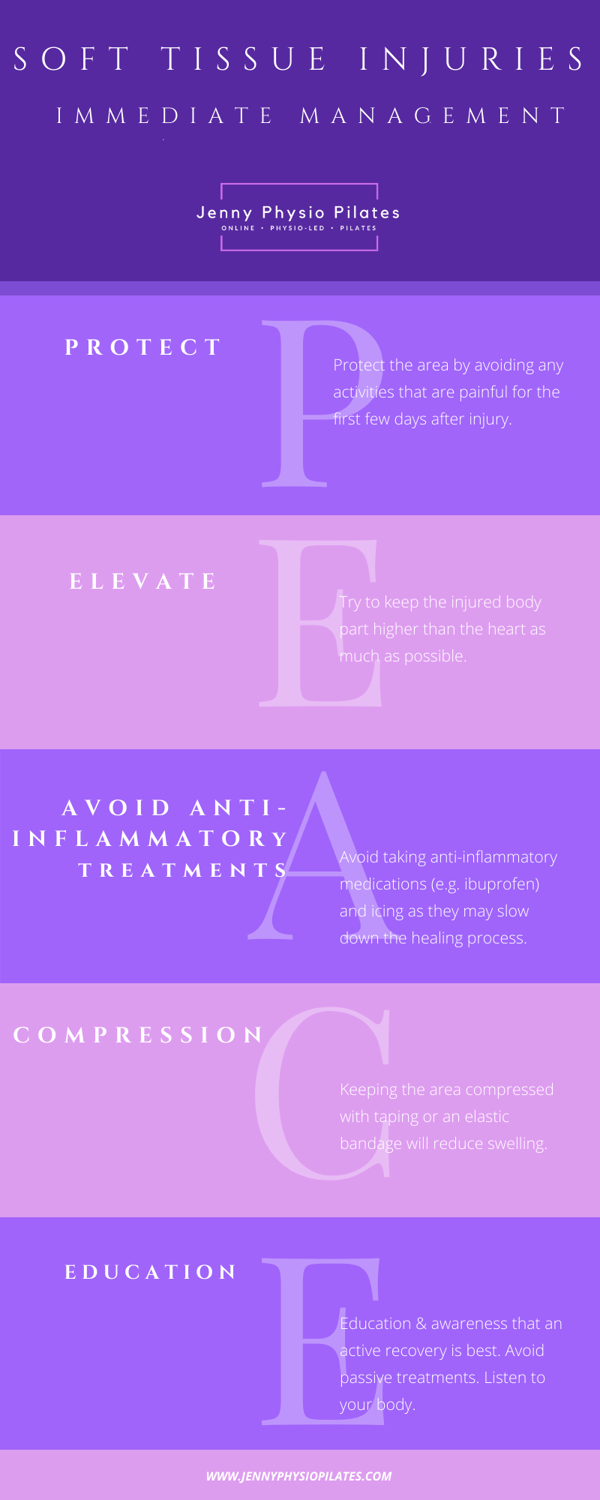Have you ever injured yourself? Did you know what to do?
My guess is you’re probably familiar with the age-old acronym of RICE or PRICE - Protect, Rest, Ice, Compression, Elevation. What you may not be so familiar with is the fact that this advice has now COMPLETELY CHANGED!
So what should you do now if you suffer a soft tissue injury?
Not to sound too hippy but PEACE & LOVE...yep I’m serious this is the most recent evidence-based advice!
For the first 72 hours after sustaining an injury, the following is recommended:

This has not changed from previous advice and guidelines. It is important to protect the injured area by giving it relative rest in the early days, by not engaging in activities or movements that evoke pain.
2. Elevate
Again, this is not new information and remains from previous advice. Elevation means keeping the injured area higher than your heart (if possible!). This should be done as often as is feasible for the first three days after injury.
3. Avoid Anti-Inflammatory Modalities
Inflammation after an injury is a good thing! Inflammation is a normal part of the recovery process and a necessary step towards healing. It is recommended to avoid taking anti-inflammatory medications, using anti-inflammatory rubs or lotions and using ice as they will all slow down the healing process.
4. Compression
Applying compression to the area - through the use of tape or elastic bandage - helps to reduce swelling in the first few days after injury.
5. Education
This one is really targeted towards healthcare professionals to educate patients that an active recovery is the best approach to dealing with an injury. Passive treatment like electrotherapy (ultrasound, laser, TENS etc), manual therapy (hands-on treatments) and acupuncture are not recommended in the early stages of healing.
After the first three days of healing the following is recommended:

1. Load
To promote recovery you will need to gradually load the injured area as you resume normal activities and exercise. Listen to your body and let pain be your guide.
2. Optimism
Be optimistic about your ability to recover! Your mind plays a strong role in the healing process - positive expectations are highly correlated with better outcomes.
3. Vascularisation
Pain-free cardiovascular exercise should be started from day 3 post-injury. Examples include: swimming, cycling, walking, running, using a crosstrainer etc. This will help to promote blood flow to the injured tissues to facilitate optimal recovery.
4. Exercise
There is strong evidence that exercise improves mobility, strength, balance and proprioception (an awareness of a joint in space) after injury. Pain can be used as a guide when progressing exercises. Maintaining activity levels and taking an active approach to recovery is key!
Did you know?
Treating a soft-tissue injury optimally in the early stages reduces the likelihood that it will persist and become chronic. If you do have a chronic injury or persistent pain this blog post may be of interest to you.
Information based on:
Dubois, B., Esculier , J. (2020). Soft-tissue injuries simply need PEACE and LOVE. British Journal of Sports Medicine; 54, pp. 72-73.







